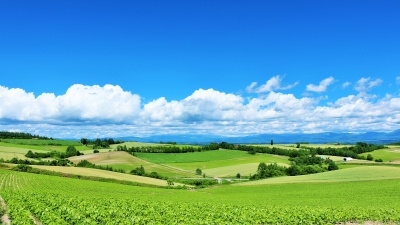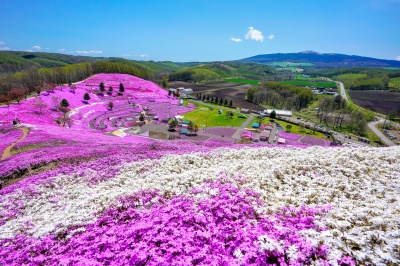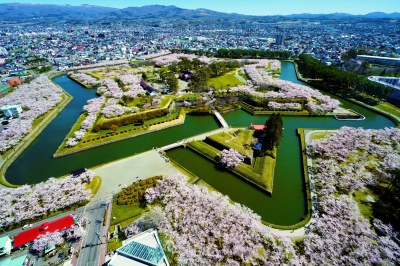To understand the true Shiretoko, view the bountiful sea nurtured by drift ice from both Rausu and Shari.

The World Natural Heritage site of Shiretoko is divided into two main areas by the Shiretoko mountain range in the center of the peninsula. The western side faces the Sea of Okhotsk and is Shari Town, while the eastern side faces the Nemuro Strait and is Rausu Town. The quality of drift ice, the winter symbol, differs in each area. Why not embark on a winter journey to discover the true Shiretoko from both sides?
- * Please note that the text shown on this page includes machine translations.
Winter When Drift Ice from Russia Turns the Sea of Shiretoko White
Drift ice is born near the mouth of the Amur River in Russia, about 1,000 km from Hokkaido. Carried by seasonal winds and ocean currents from Siberia, the drift ice gradually grows as it travels to Hokkaido. The Shiretoko Peninsula area is the southernmost point in the Northern Hemisphere where drift ice can be observed, and it cannot be seen at the same latitude in Europe.
Despite the low latitude, the combination of three conditions allows drift ice to be seen along the coast of the Sea of Okhotsk: the minus 40°C cold air blowing from Siberia, the low-salinity water layer in the Sea of Okhotsk, and the geography surrounded by islands, peninsulas, and continents.
Depending on the winter's cold and other weather conditions, drift ice can usually be seen along the coast of the Sea of Okhotsk from early January. The dynamic scenery of the sea covered entirely in white ice typically lasts from early February to early March. In Shiretoko, ships are hauled ashore during the drift ice season to avoid being crushed by the ice pressure. It is said that the cliffs of the Shiretoko Peninsula were formed by the pressure of such drift ice.
Playing with Ice in the Drift Ice Fields of the Shari Area
The Utoro coast in Shari Town, facing the Sea of Okhotsk, is a mecca for drift ice tourism. The drift ice that flows in is blocked by the Shiretoko Peninsula, increasing the ice density and creating vast drift ice fields. The majestic sight of the Sea of Okhotsk covered entirely in white ice is truly worth seeing.
A popular activity in Utoro is the "Drift Ice Walk®." Wearing a dry suit that integrates with boots, you can join a guided tour to walk on the drift ice. The suit provides high insulation and buoyancy, so you won't get cold or wet. Besides walking on the ice, you can jump into the sea and float with the drift ice or search for the drift ice fairy, Clione, between the ice gaps. This rare experience is only available in winter in Shiretoko Utoro.
On the Shari Town side, you can watch the sunset over the drift ice sea. Popular sunset spots include Horobetsu Coast, located at the beginning of the World Natural Heritage area, and Cape Puyuni, halfway up the slope from Utoro to Shiretoko Five Lakes and Shiretoko Pass. The sight of the drift ice glowing golden in the sunset is so beautiful that you'll forget the cold and want to keep watching.
Cruising the Drift Ice Sea in the Rausu Area
On the Rausu side, where the drift ice rounds the Shiretoko Peninsula, the ice density is lower. Here, you can experience the "Drift Ice Cruise." Unlike the large icebreakers operating in Monbetsu and Abashiri, these cruises use smaller vessels with a capacity of about 20 to 70 passengers, navigating through the floating drift ice. This popular cruise attracts scholars and professional photographers from around the world, as it offers a unique view of Shiretoko's winter from the sea.
During the cruise, you have a high chance of encountering white-tailed eagles and Steller's sea eagles that migrate from Russia to winter here. Watching these magnificent eagles, some of the largest in the world, flying over the drift ice, resting on it, or seeing seals lounging on the ice, is an unforgettable experience.
If you stay on the Rausu side, be sure to wake up early to see the sunrise over the drift ice sea. The stunning contrast of the sky gradually turning orange and the vast expanse of drift ice is like a magical painting. Capture the sight of eagles flying over the ice with the sunrise in the background for a truly memorable photo.
Experience the Unique Winters of Shiretoko
Shiretoko is renowned for its delicious seafood, including king crab, horsehair crab, salmon, and scallops. Particularly, the "post-drift ice horsehair crab" harvested from late March to April is considered the best seasonal delicacy, packed with rich meat.
The Sea of Okhotsk owes its abundance to the nutrient-rich drift ice. Underneath the drift ice, the part submerged in seawater is covered with ice algae, a type of phytoplankton. Small fish gather to feed on this algae, attracting larger fish, seals, white-tailed eagles, and Steller's sea eagles, creating a vibrant food chain initiated by the drift ice.
In the winter sea of Shiretoko, this cycle of life unfolds, showcasing a diverse array of wildlife. Observing the rich ecosystem that spans from the sea to rivers, forests, and mountains, which is a key reason for Shiretoko's World Heritage status, from both Rausu and Shari, you can truly feel that humans are part of this natural cycle.
The Shiretoko Transverse Road connecting Rausu and Shari is closed due to snow from November to April, requiring a detour in winter. However, experiencing the unique winters of both areas is well worth the effort. This winter, why not stay in both Shari and Rausu to discover the distinct charm of Shiretoko?
Ranking of popular articles
- Hokkaido Summer Travel Guide

- https://www.visit-hokkaido.jp/en/feature/travelguide_summer
- Hokkaido Spring Travel Guide

- https://www.visit-hokkaido.jp/en/feature/travelguide_spring
- Here are the recommended cherry blossom viewing spots!

- https://www.visit-hokkaido.jp/en/feature/sakura
- Best Places to View Flowers in Hokkaido vol. 1

- https://www.visit-hokkaido.jp/en/feature/best-places-to-view-flowers-in-hokkaido-vol-1
- When is the best time to see lavender? Recommended Lavender Spots in Hokkaido

- https://www.visit-hokkaido.jp/en/feature/lavender











